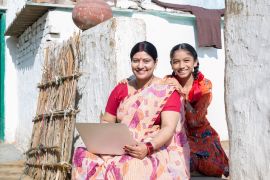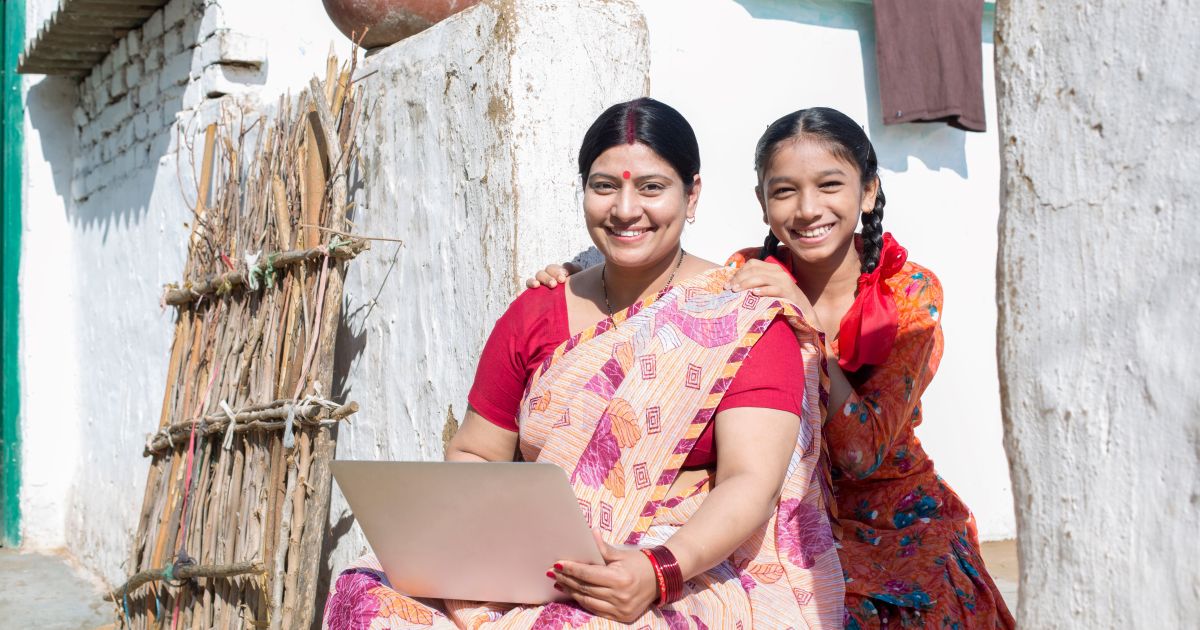
For two years, COVID-19 has profoundly altered education at all levels—with extensive school closures, remote instruction, and controversies over public health policies in schools. But innovative responses to the pandemic have also revealed the strength of communities in tackling disrupted learning, and ensuring educational success more broadly. We’ve seen that firsthand in our work in Bangladesh and India throughout the pandemic, and the implications are valuable for the future of education globally.
By “community,” we mean the engagement of parents, caregivers, siblings, extended family members, and neighbors. And central to this is the engagement of women, especially mothers, in ensuring children get to school, and who, throughout the pandemic, played an expanded role in supporting teachers to facilitate children’s learning at home.
For instance, in India young mothers, caregivers, and young people helped strengthen Pratham Education Foundation’s network in more than 10,000 rural and urban communities during the pandemic. Pratham used the smallest sub-unit—mohalla (hamlet)—as the unit for organizing activity.
The role of community is especially vital because of the comfort we see children often feel with people, especially women, from their own neighborhoods. This comfort is particularly important in the current situation, where students could be facing years of disrupted learning that may be hard to understand for an outsider. Community-level learning initiatives tackle these challenges head on.
From mid-2021, mothers’ groups and youth-led children’s groups were started in 40,000 mohallas with support from Pratham to ensure that young children continued to learn and were ready to resume school when they opened.
It takes a community to educate a child—and that happens best when the community is excited and engaged with learning.
Each mothers’ group consisted of four to six mothers and was led by a “smart mata”—a mother with a smartphone. The groups met weekly or fortnightly to share their experiences and access “idea cards” sent via WhatsApp containing games, activities, and recipes. The group approach provided crucial support to young mothers and elevated their role in the community. When possible, school readiness melas (fairs) were conducted in open public spaces, with mothers and young children participating and other community members attending.
For children in grades three to six, a youth volunteer (a local high school or college student) brought a small group of eight to 10 children together in a “mini learning camp.” These typically open-air camps, modeled on Pratham’s teaching-at-the-right-level approach, brought people together for one to two hours per day using simple instructional activities and materials made by the children and young people. In August and September of 2021, close to 30,000 camps ran in the 10,000 communities, focusing on basic arithmetic for one month and reading for a second month. Technology helped to strengthen human interaction in these experiences; learning camps were supported remotely via WhatsApp and SMS messages followed up by frequent phone calls and Zoom meetings. Pratham team members also did “zoom par ghoom” (visiting camps via Zoom).
In Bangladesh, community played a similarly crucial role in the evolution of two educational initiatives: Pashe Achhi (Beside You) and phone schools. Both emerged from COVID-19 school closures and engaged a broad community using basic technology. Both had women at the center of the activities.
Pashe Achhi is a remote learning mechanism that provides educational opportunities for children and psychosocial support for caregivers. When BRAC’s preschool Play Labs closed due to COVID-19, local women trained as play leaders began, on their own initiative, using basic mobile phones to maintain regular contact with children and their caregivers—usually mothers. That instinct led to the creation of Pashe Achhi. Experts at the BRAC Institute of Educational Development (BRAC IED) convened psychologists and play-based curriculum developers to create 20-minute tele-conversational scripts, providing both psychosocial support and play-based learning. In total, 1,300 play leaders were trained on effective delivery of the scripts. Those play leaders facilitated weekly 20-minute, one-on-one calls with caregivers and children. Forty thousand calls took place weekly, until the Play Labs began reopening in March.
For children of school-going age, BRAC ran phone schools. The teachers in BRAC’s extensive network of nonformal one-room schools, all of whom are women recruited from their own communities and trained locally, conducted virtual classes twice a week in group calls of three to four children. Those calls reached over 180,000 students in more than 7,000 schools and were supported by small group sessions, home visits, and project-based learning.
With the new school year beginning, BRAC is piloting a new initiative—10-month courses that assess the competency levels of children who are currently out of school, take them through an accelerated learning program, and transition them into a government school. This is supported by two local mechanisms, which both operate at the smallest subunit, or para (village). Firstly, para committees will engage community members to encourage and monitor students’ progress—both in the BRAC schools but particularly after students transition into government schools. Secondly, BRAC teachers will run an additional after-school program two days a week open to all students who are either in or have finished the 10-month program.
Central to all of these initiatives is the power of community.
While it’s not unusual for communities to be engaged in some way in education, typically their involvement has been focused on ensuring schools exist and managing them. Community engagement during the pandemic was much broader, playing a strong role in supporting children to learn. Indeed, recent ASER reports in India during 2020 and 2021 show parents across all education and income categories helped children with learning activities.
Even when schools are open, communities must continue to be actively engaged to drive learning. Schools should welcome community members and see them as the source of innovation, inspiration, and support that they have proven to be. The people closest to challenges are the best positioned to drive solutions, and people in communities know the future of their communities lies in their children. As the world searches for high-tech solutions to improving learning, approaches should start from the basics. It takes a community to educate a child—and that happens best when the community is excited and engaged with learning.


